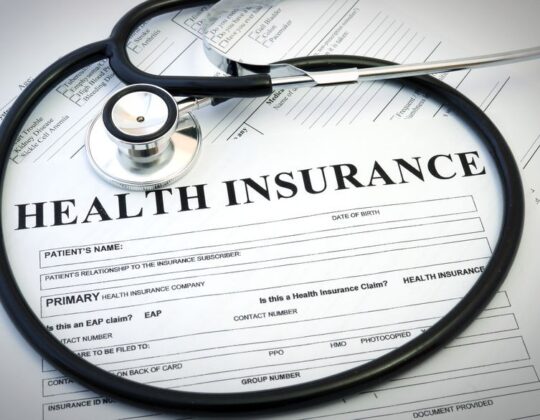When it comes to health insurance, dental care often stands as a distinct entity, prompting questions about coverage and reimbursement for dental-related problems. The relationship between health insurance and dental issues is nuanced, with various factors influencing whether and to what extent dental problems can be reimbursed through health insurance. In this article, we’ll delve into the complexities of this intersection, exploring the types of dental issues covered by health insurance, common exclusions, and strategies to navigate the dental dilemma within the realm of health insurance.
1. The Divide Between Health and Dental Insurance:
Traditionally, health insurance and dental insurance have been separate entities, each catering to specific aspects of an individual’s well-being. Health insurance primarily focuses on medical issues related to the body and its systems, encompassing treatments, surgeries, and preventive care. Dental insurance, on the other hand, is designed to cover oral health, including routine check-ups, cleanings, and certain dental procedures.
2. Dental Issues Covered by Health Insurance:
While health insurance is not a one-size-fits-all solution for dental problems, there are instances where health insurance may contribute to the reimbursement of dental-related issues. These typically include:
Trauma and Accidents: If a dental injury is the result of an accident or trauma, health insurance may cover the medical aspects of the treatment. For example, if a car accident leads to a broken jaw or damage to teeth, health insurance may contribute to the hospitalization, surgery, or other medical interventions.
Medical Necessity: In certain cases, dental procedures may be considered medically necessary due to their impact on overall health. For instance, a dental infection that poses a risk of spreading to other parts of the body may be deemed medically necessary, and health insurance may provide coverage for related treatments.
Underlying Health Conditions: Some health conditions, such as diabetes or autoimmune disorders, can have implications for oral health. In such cases, health insurance may contribute to the treatment of dental issues related to the underlying health condition.
3. Common Exclusions in Health Insurance:
Despite the potential overlap in certain scenarios, health insurance typically excludes coverage for routine dental care and elective dental procedures. Common exclusions include:
Routine Check-ups and Cleanings: Health insurance rarely covers routine dental check-ups, cleanings, or preventive treatments. These fall under the purview of dental insurance.
Orthodontic Procedures: Orthodontic treatments, including braces and aligners for cosmetic reasons, are generally not covered by health insurance.
Cosmetic Dentistry: Procedures performed for cosmetic purposes, such as teeth whitening or veneers, are typically excluded from health insurance coverage.
Dental Crowns and Bridges: While health insurance may cover certain medical aspects of procedures involving crowns or bridges, the dental components may not be included.
Dentures: Replacement or fitting of dentures is usually considered a dental expense and falls outside the scope of health insurance coverage.
4. Coordinated Care and Dual Coverage:
In some cases, individuals may have dual coverage with both health and dental insurance. Coordinated care between the two types of insurance can offer comprehensive coverage for certain scenarios. For example, if a medical procedure requires dental work, having both types of insurance can help bridge the gap in coverage and reduce out-of-pocket costs.
5. Standalone Dental Insurance:
Given the limitations of health insurance in addressing routine dental care, many individuals opt for standalone dental insurance to ensure comprehensive coverage for oral health needs. Dental insurance typically covers preventive care, basic procedures (such as fillings and extractions), and major dental work (such as root canals and crowns).
6. Strategies for Navigating Dental Costs:
Understand Your Coverage: Familiarize yourself with the specifics of your health insurance policy, including any dental-related coverage or exclusions. Knowing the extent of your coverage can help you plan for potential expenses.
Consider Standalone Dental Insurance: If your health insurance does not provide comprehensive dental coverage, consider purchasing standalone dental insurance. This ensures that you have dedicated coverage for routine dental care and other oral health needs.
Explore Discount Plans: Some individuals opt for dental discount plans, which provide reduced rates for dental services in exchange for a membership fee. While not insurance, these plans can offer cost savings on various dental procedures.
Utilize Health Savings Accounts (HSAs) or Flexible Spending Accounts (FSAs): If you have an HSA or FSA, funds from these accounts can often be used for dental expenses, including copayments, deductibles, and certain treatments.
Seek Pre-Authorization: If you anticipate needing dental work that may have medical implications, seek pre-authorization from your health insurance provider. This involves obtaining approval in advance for a specific treatment or procedure, clarifying the extent of coverage.
7. The Importance of Communication:
Communication is key when navigating the complexities of health and dental insurance. Engage with both insurance providers to understand coverage, inquire about potential overlaps, and clarify any uncertainties. Being proactive in seeking information can help you make informed decisions about your healthcare and financial planning.
8. The Future of Integrated Care:
As the healthcare landscape evolves, there is growing recognition of the interconnectedness of oral health and overall well-being. Some healthcare models are exploring integrated care that considers both medical and dental aspects, aiming to provide more holistic coverage for individuals. While these initiatives are in their early stages, they underscore the evolving understanding of the integral relationship between oral health and overall health.
Conclusion: Balancing Oral Health and Insurance Realities
Navigating the reimbursement landscape for dental-related problems within the realm of health insurance requires a nuanced understanding of policy specifics and potential overlaps. While health insurance may contribute to certain scenarios, standalone dental insurance remains a reliable solution for comprehensive oral health coverage. As individuals seek to balance the intricacies of oral health and insurance realities, proactive communication with insurance providers and a strategic approach to coverage can pave the way for informed decisions and financial well-being.









